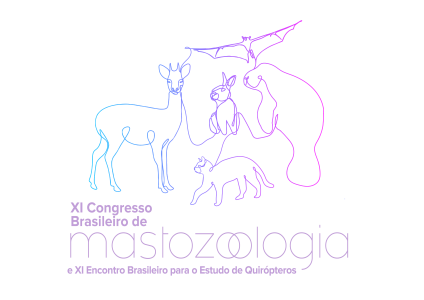Dados do Trabalho
Título:
CONTINENTAL-SCALE LOCAL EXTINCTIONS IN MAMMAL ASSEMBLAGES ARE SYNERGISTICALLY INDUCED BY HABITAT LOSS AND HUNTING PRESSURE
Resumo:
Understanding the leading drivers of either species persistence or extirpation in the Anthropocene is a central challenge in conservation macroecology. Mammal species have succumbed to unprecedented human-induced population declines worldwide, which has been most severe for species larger than 1 kg. Several studies have pointed to the inextricable roles of habitat loss and overhunting as drivers of large vertebrate extinctions, which affect the taxonomic, functional and phylogenetic diversity. Based on real-world occurrences of 83 mammal ecospecies (i.e. strict ecological analogues often represented by parapatric congeners) across 1,029 sites within the entire Neotropics, we set out to identify and disentangle the role of life-history traits under a phylogenetically controlled design in explaining local extinctions given the two leading threats to these species, namely habitat loss (the inverse of remaining habitat area [i.e. 100 – habitat area]) and hunting represented by a metric that ranged from -1.0 (non-hunted sites) to +1.0 (heavily hunted sites). We also examine the dominant role of body size in either reducing or aggravating local extinctions. We analyzed this large dataset using descriptive statistics, Generalized Linear Mixed Models, Phylogenetic Generalized Least Squares, and Phylogenetic Generalized Linear Mixed Models. Habitat loss was the leading driver of local extinctions affecting 75% of all mammal species, whereas hunting exerted a coup de grâce effect on 70% of the species whose local fates were determined by the synergistic interaction between habitat loss and hunting. Hunting pressure per se apparently did not meaningfully affect the extinction probability of the small-bodied mammal fauna, given that hunting was not the primary driver of local extinction of all 54 ecospecies smaller than 10 kg. However, hunting was the primary extinction factor of ~10% of all large-bodied species even in otherwise intact landscapes. Furthermore, the combined effects of both hunting and habitat loss best explained the extinction-proneness of 19 of the 29 ecospecies >10 kg (65.5%), and a similar proportion was observed for the small-bodied fauna (38 of 54 ecospecies, 70.4%). Our results show that Neotropical sites across landscapes retaining ≤30% of their original habitat and subjected to heavy levels of hunting pressure (≥0.40) contained only ~35% of the historical mammal fauna. Even after the millennial timescale that shaped modern biotas, threats to the Neotropical megafauna have never been as severe as in the last five decades. Forged by millennial-scales paleozoogeographic events — such as the isolation of South America over >100 million years and the Great American Biotic Interchange in the late Cenozoic — the meso- and megafauna of the New World tropics has been relentlessly simplified since the arrival of Clovis hunters. Yet local extinctions have never spread more rapidly than in the last five decades. We thus emphasize that the rapid large mammal defaunation of the tropics will disrupt many ecosystem functions and, ultimately, human well-being. The narrowing window of time for mitigation action, it is imperative to implement effective conservation plans to prevent further impoverishment of this fauna resulting from the two most pervasive threats to the world’s large vertebrates.
Financiamento:
JAB is supported by the São Paulo Research Foundation (FAPESP) postdoctoral fellowship grants #2018-05970-1 and #2019-11901-5. KMPMBF is funded by research grants (#308632/2018-4 and #303940/2021-2) from the Conselho Nacional de Pesquisa e Desenvolvimento Científico e Tecnológico (CNPq). Part of this research was carried out using the computational resources of the Center for Mathematical Sciences Applied to Industry (CeMEAI) funded by FAPESP (grant #2013-07375-0).
Área
Conservação
Autores
JULIANO A. BOGONI, KATIA M. FERRAZ, CARLOS A. PERES
